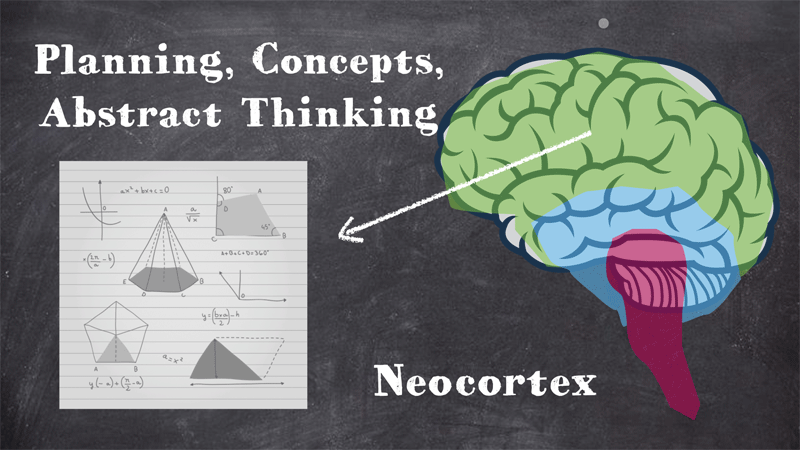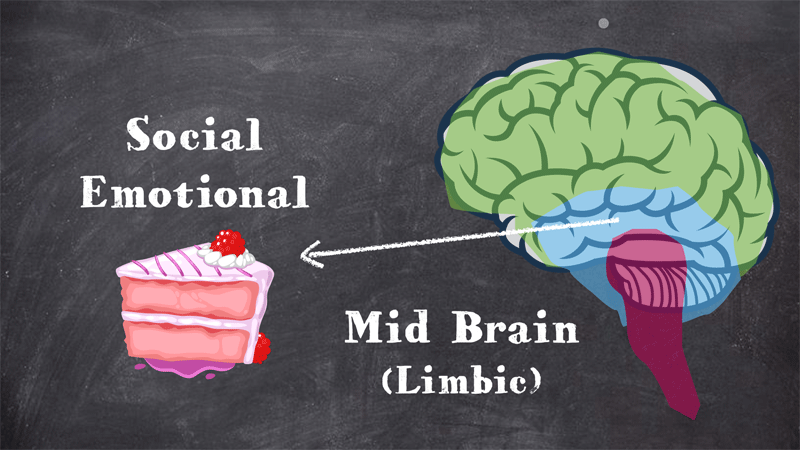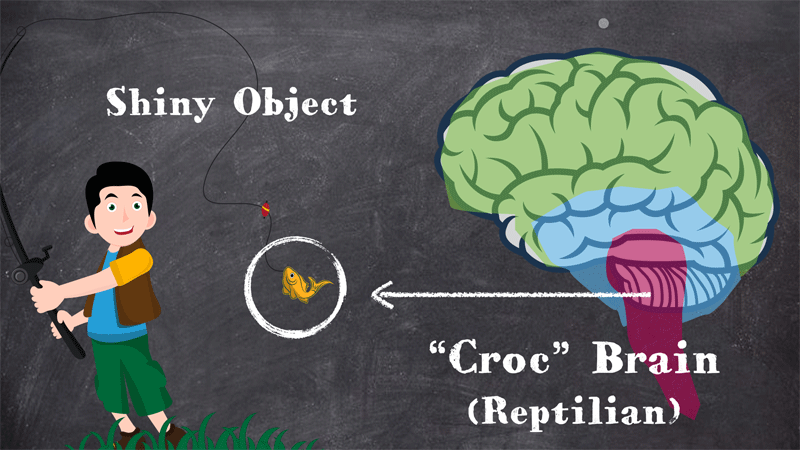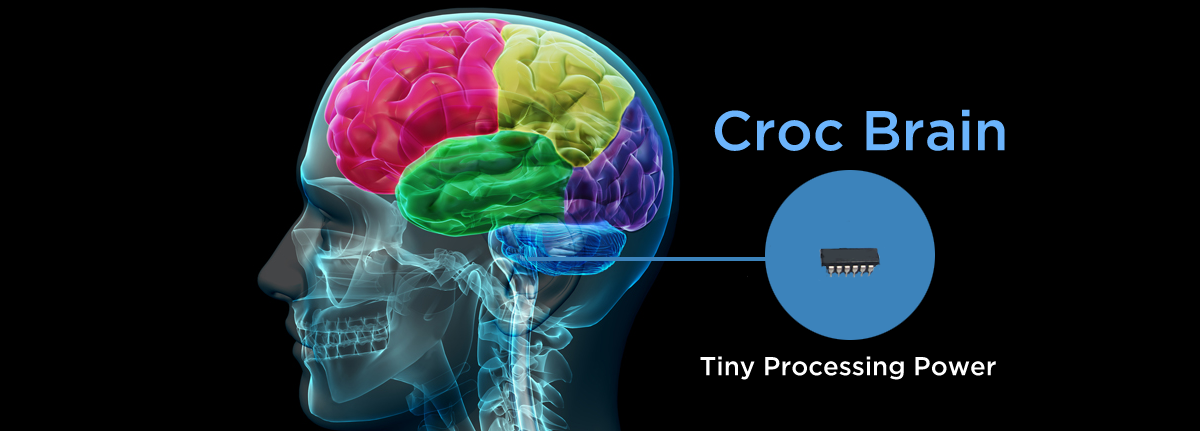The Reptile Brain Runs The Show – In Spite of What We Think
I think most of us are aware that humans are not the logical, rational, and reasonable beings we imagine ourselves to be. Rather we are driven by our emotions, which is one of the reasons why design is all about heightening the senses and engaging curiosity and imagination, as a way to become more influential and hopefully, convey meaning and create connection.
But we’re talking about designing for the Croc Brain, so let’s dig a little deeper.
The following exploration is inspired by a venture capitalist in California who was having trouble raising money for his clients. In other words, his pitches were falling on deaf ears and the Porche payments were piling up.
He started to investigate how the brain works, in order to understand how to make his pitches to investors more effective. There are 3 parts to the brain, and we use these 3 parts at different times for different activities.

The outside part of the brain, or neocortex, is where we plan, design, and conceptualize. In the spectrum of human development, this would be the most recently developed portion of the brain.

Next is the midbrain or Limbic, which is concerned with emotions and social relationships. It would be the second oldest part.

And the oldest part of the brain is called the reptile brain, or “croc brain”. It’s the part of the brain that deals with survival, new situations, fight or flight, fear and sex. It’s attracted to the new and novel.
Over a period of 10 years, working with a neuroscientist friend and tracking his results, the VC discovered a few things. One was that in all of his presentations, the investors were listening with their reptile brain – the one that filters new experiences, new ideas, or anything else that fights for its attention.
The problem was that most of his pitch decks and presentations were designed with his neocortex, the planning and conceptualizing part of the brain. As a result he did not have a very good success rate, to say the least. And he was not the only one. Most people use the neocortex, the planning and conceptual part of the brain, to design their pitches and presentations. Meanwhile audiences are using their reptile brains to listen!
The Croc Brain operating system:
1. has very little, and very limited processing power
2. has a short attention span, that it guards very closely
3. as a result, it sees new ideas as a threat
4. if something looks boring, it ignores it
5. if something looks complicated, it radically summarizes what it is and then discards it
So you can imagine what happens if you go into a meeting with a very abstract, complicated presentation, with lots of text, few visuals, and no contrast. And as designers, I’m sure we have all seen good examples of that!
As well, you can see what might happen to some very good ideas presented to a committee or a board room…ideas that are easily discarded by the reptile part of the brain with limited processing power.
What gets the Croc Brain’s attention?
An idea that is fast or moving
An idea that is novel
An idea that is concrete
An idea that is visual with high contrast
Sounds like good design, doesn’t it?
Image credit – transparent skull and brain (graphics modified for this post): Allan Ajifo
